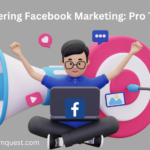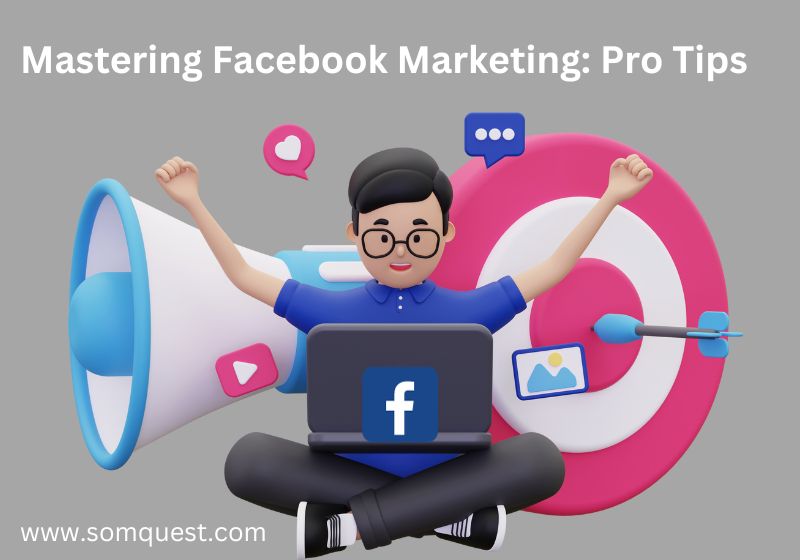Are you ready to delve into the world of social media advertising? Buckle up, because we’re about to embark on a journey that uncovers the incredible potential of this marketing powerhouse, showcasing its pivotal role in shaping modern digital marketing strategies.
In today’s fast-paced digital landscape, the arena of social media advertising has shifted dramatically. As consumers increasingly turn to social media for entertainment, information, and social interaction, businesses have adapted to tap into the vast opportunities that lie within these digital communities.
Social media advertising stands at the forefront of this digital marketing revolution, offering a unique blend of precision targeting, creative expression, and powerful data analysis. But what makes it such a vital component of contemporary marketing strategies? Let’s explore the significance of social media advertising and how it’s driving businesses to success in the digital age.
With millions of users engaging on social platforms daily, the potential reach of social media advertising is awe-inspiring. No matter your industry or target audience, social media platforms offer the tools to connect with your ideal customers in a space where they willingly share their interests, desires, and behaviours.
So, sit back, relax, and let’s begin this journey to master the essentials of social media advertising.
Table of Contents
The Dynamics of Social Media Advertising

Now that we’ve set the stage for our journey into the world of social media advertising, it’s time to dive into the dynamic landscape of this ever-evolving domain. Social media advertising isn’t just a marketing strategy; it’s a dynamic force that constantly shapes and reshapes the way brands engage with their audience in the digital realm.
In an era where online interactions and digital experiences have become integral to our lives, the advertising landscape has transformed at a breathtaking pace. Traditional advertising methods have taken a back seat as businesses rush to harness the potential of digital platforms to reach their target audiences effectively.
Let’s take a moment to unravel some key statistics and trends that underpin the world of digital advertising and, in particular, social media advertising. Understanding these dynamics is crucial to crafting successful marketing strategies and ensuring that your brand stays relevant and connected to the ever-evolving digital consumer.
The power of data and analytics has opened up new horizons for advertisers. Digital advertising offers the ability to precisely target and engage with specific audiences, turning every interaction into a valuable data point. These data-driven insights allow advertisers to understand user behaviour, preferences, and the success of their ad campaigns like never before.
Crafting Your Advertising Strategy
Now that we’ve explored the dynamic landscape of social media advertising, it’s time to roll up our sleeves and delve into the art of crafting a compelling advertising strategy. A successful social media advertising campaign doesn’t happen by chance; it’s a well-thought-out, strategic effort that aligns your brand’s objectives with the preferences and behaviours of your target audience.
The first crucial step in building your advertising strategy is identifying your target audience. In the vast expanse of social media, there’s an audience for almost every niche and interest. However, your success lies in knowing precisely who your ideal customers are. This involves understanding their demographics, interests, online behaviours, and pain points.
Once you’ve pinpointed your target audience, the next step is defining your objectives. What do you aim to achieve with your social media advertising efforts? Are you looking to increase brand awareness, drive website traffic, generate leads, or boost sales? Clearly defined objectives provide a roadmap for your strategy, ensuring every action is purposeful and results-driven.
Choosing the Right Social Platforms
In the ever-expanding universe of social media, it’s essential to recognize that not all platforms are created equal. Each social platform has its unique strengths, audience demographics, and interaction dynamics. To master social media advertising, you must first identify which platforms align best with your business goals and target audience.
Let’s start by understanding the strengths and demographics of different social platforms. Facebook, for instance, boasts a vast and diverse user base. With its advanced targeting options, it’s an ideal choice for businesses looking to reach a wide range of audiences. On the other hand, Instagram, with its visual-centric nature, caters to brands that can showcase their products or services through captivating images.
Twitter excels in real-time engagement and is perfect for businesses seeking to join ongoing conversations and trending topics. LinkedIn, the professional network, is ideal for B2B marketing and connecting with industry experts. Pinterest is a visual discovery platform, great for brands that can showcase creative DIY, fashion, or lifestyle content.
The list goes on, and each platform has its niche. To tailor your advertising efforts effectively, you need to select the platforms that best suit your business. This means considering the preferences and behaviours of your target audience. Where do they spend their time online? What type of content resonates with them? Which platform aligns with your brand’s objectives?
Creating Engaging Ad Content
Crafting captivating ad content is the cornerstone of successful social media advertising. In a fast-scrolling world, where users are bombarded with content, your ads need to stand out, resonate, and, most importantly, capture attention. But how do you create ad content that truly engages your audience? Let’s explore some techniques and strategies to make your ads irresistible.
Visual Appeal: Visuals are the first thing that catches the eye. Whether it’s an eye-catching image, an attention-grabbing video, or an intriguing infographic, your visuals must be compelling. Invest in high-quality graphics or videos that align with your brand and messaging. Remember that your ad should be visually consistent with your organic posts to build brand recognition.
Copywriting Craft: The words you choose matter. Your ad copy should be concise, clear, and persuasive. Start with a compelling headline that piques interest and follow it up with succinct yet informative text. Use action words and address the pain points or desires of your target audience. A well-crafted copy can make a significant difference in ad performance.
Tell a Story: Storytelling is a powerful tool in advertising. Narratives create a connection with your audience and make your brand more relatable. Share stories that evoke emotion or demonstrate how your product or service can solve real-life problems. Storytelling can humanize your brand and build trust with potential customers.
A/B Testing: Not sure which ad content will perform best? A/B testing allows you to experiment with different visuals, copy, and even ad formats. Run multiple variations of your ad to see which one resonates most with your target audience. Over time, you’ll refine your content to perfection.
Video Domination: Videos are increasingly dominating the social media landscape. They capture attention and convey messages effectively. Whether it’s a short, snappy video ad or a more in-depth explainer video, incorporate video content into your advertising strategy. It’s a format that’s hard to ignore.
Ad Formats and Their Impact
When it comes to social media advertising, your choice of ad format can make all the difference. Different formats offer unique opportunities to engage with your audience. In this section, we’ll take an in-depth look at various ad formats – from images to videos to carousels – and explore how your choice can influence audience engagement.
Single Image Ads: These are simple yet effective. A single, attention-grabbing image can convey your message succinctly. Use this format when you have a clear focal point or a product to showcase.
Video Ads: Video is a compelling medium for storytelling. With the rise of short video content on platforms like TikTok and Instagram Reels, creating engaging video ads has become more critical than ever. Videos can provide insights, showcase product features, or even take viewers behind the scenes.
Carousel Ads: These allow you to include multiple images or videos in a single ad. It’s like telling a story in segments. Use carousels when you want to highlight a range of products, step-by-step processes, or a progression of ideas.
Slideshow Ads: Slideshows are a fusion of images, text, and sound. They offer an engaging way to convey your message without the complexity of video production. Create slideshows that tell a visual story.
Collection Ads: Ideal for eCommerce businesses, collection ads feature a primary image or video with several product images below. This format allows users to browse your products without leaving the ad.
Instant Experience Ads: Formerly known as Canvas, these ads provide an immersive, full-screen mobile experience. You can combine images, videos, and call-to-action buttons to create a captivating ad journey.
Stories Ads: With the popularity of Stories on platforms like Instagram and Facebook, creating vertical, full-screen Stories ads is a smart move. Stories ads are excellent for creating an ephemeral sense of urgency.
The Impact: The format you choose can significantly impact your audience’s engagement. For example, video ads tend to receive higher engagement rates due to their dynamic nature, while carousel and collection ads are perfect for showcasing multiple products.
Targeting and Audience Segmentation
In the realm of social media advertising, precision is key. You can have the most compelling ad, but it won’t make a significant impact if it doesn’t reach the right audience. That’s where targeting and audience segmentation come into play.
Understand Your Audience: The journey to successful targeting starts with knowing your audience inside out. What are their interests, demographics, behaviors, and preferences? The better you understand them, the more effectively you can connect.
Demographic Targeting: Age, gender, location – these are the basics of demographic targeting. It’s like painting broad strokes. It helps you reach a particular group that’s more likely to be interested in your offerings.
Behavioural Targeting: Here, you target users based on their online behavior. Have they recently searched for related products? Have they engaged with similar content? Behavioral targeting lets you tap into user intent.
Interest Targeting: This allows you to focus on users with specific interests or hobbies. If you’re selling fitness gear, you can target people interested in fitness and healthy living.
Lookalike Audiences: Facebook, for instance, lets you create lookalike audiences based on your existing customers. The platform finds users with similar characteristics and behavior to your current customers.
Retargeting: Also known as remarketing, this strategy involves re-engaging users who have interacted with your brand in some way. It’s a powerful way to remind them of your products or services.
Custom Audiences: You can create custom audiences by uploading your customer list or using website visitor data. This allows for highly tailored messaging.
Audience Segmentation: Once you’ve defined your target audience, it’s time to segment them. Divide your audience into smaller, more manageable groups. For example, you can segment by purchase history, engagement level, or location.
Data-Driven Decisions: The key to successful audience segmentation is data. Collect and analyze data regularly. Understand what’s working and what’s not, and adjust your targeting strategies accordingly.
Testing and Optimization: A/B testing is your friend. Experiment with different ad creatives, messaging, and targeting options. Over time, optimize your campaigns based on what delivers the best results.
The Impact: Effective targeting and audience segmentation can significantly boost your ad’s performance. You’ll reach the right people with the right message at the right time, leading to higher engagement and conversions.
Social Media Advertising Tips and Tricks

In this section, we’ll equip you with pro tips and tricks to not only optimise your ad campaigns but also conquer the common challenges that many advertisers face in the ever-competitive world of digital marketing.
1. Set Clear Objectives: Start with a crystal-clear understanding of what you want to achieve with your social media ads. Whether it’s increasing brand awareness, generating leads, or driving sales, setting specific objectives is the foundation of a successful campaign.
2. Know Your Platforms: Different social platforms have different strengths. Facebook, Instagram, Twitter, LinkedIn – they each offer unique features and cater to distinct audiences. Tailor your ad content to fit the platform you’re using.
3. Quality Over Quantity: Instead of bombarding your audience with numerous ads, focus on creating high-quality, engaging content. Quality trumps quantity in the world of social media advertising.
4. Mobile Optimization: With the majority of users accessing social media on mobile devices, ensure your ads are mobile-optimised. Mobile-friendly ads can significantly enhance your reach.
5. Visual Appeal: Visual content, such as images and videos, tends to perform exceptionally well on social media. Invest in eye-catching visuals that tell a story and capture attention.
6. Harness the Power of Video: Video content is king in the social media realm. Videos are not only engaging but also convey information effectively. Short videos, in particular, have shown great success in recent years.
7. Ad Placement: Be strategic in ad placement. Choose the positions and locations on the platform where your ads will be most visible and relevant to your target audience.
8. Test Ad Copy: A/B testing your ad copy is crucial. Experiment with different headlines, body text, and calls to action to see what resonates most with your audience.
9. Remarketing: Don’t lose sight of those who have previously interacted with your brand. Set up remarketing campaigns to re-engage users who have already shown interest in your products or services.
10. Analyse and Adjust: Regularly monitor the performance of your ad campaigns. Use the data you collect to make data-driven decisions and fine-tune your strategies.
Challenges in Social Media Advertising

While social media advertising offers immense opportunities, it’s not without its challenges. Let’s explore a few common hurdles and how to overcome them:
Ad Fatigue: Over time, your audience may become fatigued by seeing the same ad repeatedly. Combat this by regularly refreshing your ad content and experimenting with new creatives.
Audience Saturation: Reaching your target audience can become challenging if you’ve saturated your chosen market. Consider expanding your target audience or creating lookalike audiences.
Rising Costs: As competition grows, advertising costs can increase. To mitigate this, focus on optimizing your ad campaigns for better ROI.
Evolving Algorithms: Social media platforms frequently update their algorithms, impacting the visibility of your ads. Stay informed about algorithm changes and adjust your strategies accordingly.
Conclusion
In the ever-evolving realm of digital marketing, one thing remains constant: the undeniable power of social media advertising. As we wrap up our exploration of “Social Media Advertising Essentials,” remember to note down all the takeaways for future use.
As we conclude, remember that knowledge is only as valuable as its application. You now possess a wealth of knowledge about social media advertising, and it’s time to apply it. Take the insights from this guide and turn them into action, crafting engaging content, optimizing your campaigns, and overcoming challenges. Stay informed, be adaptable, and keep your finger on the pulse of this dynamic industry.
The journey to social media advertising mastery is ongoing. As you navigate this exciting landscape, keep experimenting, learning, and refining your strategies. Your success awaits in the world of social media advertising.
FAQs
FAQ 1: What is the best social media platform for advertising?
The choice of the best social media platform depends on your business objectives and target audience. Facebook, with its vast user base, offers broad reach and advanced targeting options. Instagram excels for visually appealing products and younger demographics. LinkedIn is ideal for B2B marketing, while Pinterest suits visual, lifestyle, and DIY products. Twitter is great for real-time engagement. Your choice should align with your goals and audience.
FAQ 2: How can I measure the effectiveness of my social media ad campaigns?
Measuring the effectiveness of your social media ad campaigns involves tracking key performance indicators (KPIs). Common KPIs include click-through rates (CTR), conversion rates, engagement metrics (likes, shares, comments), and return on ad spend (ROAS). Social media platforms often provide built-in analytics tools. Consider employing third-party tools for in-depth analysis. Regularly review these metrics to evaluate campaign performance and make necessary adjustments.
















